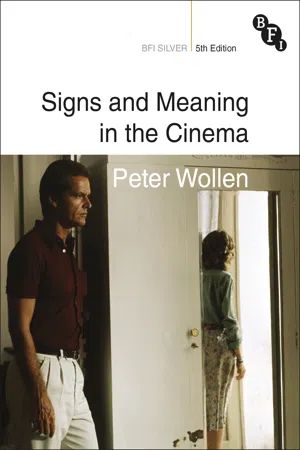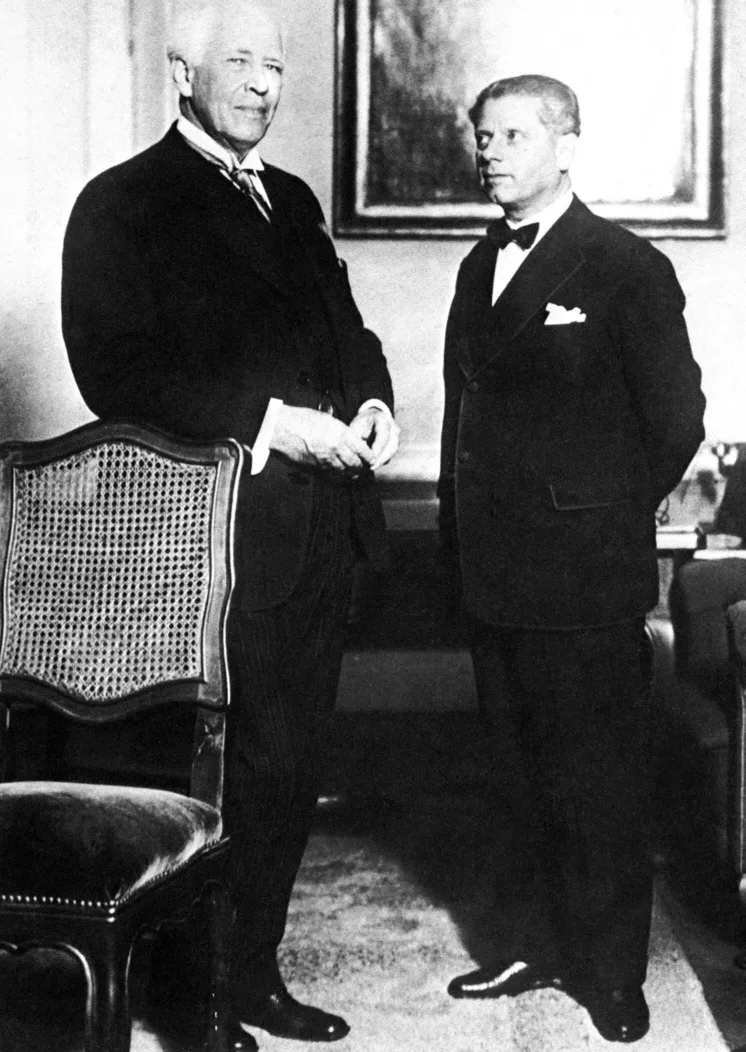![]()
1: Eisenstein’s Aesthetics
Even today the Bolshevik Revolution reverberates through our lives. During those heroic days Eisenstein was a student at the Institute of Civil Engineering in Petrograd. He was nineteen years old. He was not prepared for the overthrow of the existing order of society, the collapse of his culture and ideology and the dissolution of his family as his parents departed into exile. The Revolution destroyed him, smashed the co-ordinates of his life, but it also gave him the opportunity to produce himself anew. It swept aside the dismal prospect of a career in engineering, his father’s profession, and opened up fresh vistas. In the span of ten years, as we know, Eisenstein was to win world fame, first in the theatre, then in the cinema. In order to achieve this, he was compelled to become an intellectual, to construct for himself a new world-view, a new ideological conception both of society and of art. He had to become a student of aesthetics in order to work in the cinema; he could take nothing for granted. And, of course, we cannot separate the ideas which he developed from the matrix in which they were formed, the matrix of the Bolshevik Revolution.
The ideology of the new order of society was proclaimed as political, revolutionary and scientific, and it was in this image that Eisenstein sought to construct his art and his aesthetics. When, through a chance meeting with a childhood friend, he became a scenery-painter and set-designer at the Proletcult Theatre in Moscow, he quickly recognised that the theatre should be a vehicle for political propaganda, a laboratory for avant-garde experiment and, in the words of his mentor, the actor and director Vsevolod Meyerhold, a machine for acting, manned by technicians, rather than a temple with a priesthood. In this, of course, he was not alone. He identified himself with the artistic avant-garde which he found, a dynamic avant-garde whose ideas were forged, among others, by Meyerhold, the poet and playwright Mayakovsky, the painters Kasimir Malevich and Vladimir Tatlin. Under their leadership the pre-Revolutionary movements of Futurism and Symbolism were reassessed and transformed. Art was to be a branch of production, in the service of the Revolution. Thus Constructivism was born.
Eisenstein’s production of The Wise Man
Eisenstein’s first production in the theatre took place in 1923. The play, an adaptation of a nineteenth-century work by Ostrovsky, was organised not into acts and scenes but as a programme of attractions, as in the music-hall or the circus. The stage was laid out like a gymnasium, with a tightrope, vaulting-horses and parallel bars. Caricatures of Lord Curzon, Marshal Joffre, Fascists and other political figures were lampooned in satirical sketches. There was a parody of a religious procession, with placards reading ‘Religion is the opium of the people’. Clowns and ‘noise bands’ assaulted the audience, under whose seats fireworks exploded. At one point a screen was unrolled and a film diary projected. It was this travesty of Ostrovsky, produced incongruously enough in the ballroom of the ex-Villa Morossov, which was the occasion for Eisenstein’s first theoretical writing, published in the magazine Lef. In this manifesto he outlined his concept of the montage of attractions.
At this point the greatest influence exerted on Eisenstein was that of Meyerhold. Meyerhold, already a successful theatre director before the Revolution, emerged after it as a leader of the avant-garde. He was motivated by a deep distaste for the methods of Stanislavsky and the Moscow Arts Theatre, later, of course, to be enshrined as the apogee of Stalinist art. Meyerhold’s original antipathy sprang from his hostility to Naturalism, part of his inheritance from Symbolism, which until Futurists such as Mayakovsky burst upon the scene was the leading foreign, imported counter-trend to the dominant domestic insistence on civic and social themes, going back from Tolstoy to Belinsky. In 1910 Meyerhold had set up an experimental studio where he worked under the pseudonym Dr Dapertutto, a name taken from the Tales of Hoffmann. Hoffmann, and German Romanticism in general, had an enormous influence on Meyerhold and on the whole Russian intelligentsia of the time. (Adaptations of Hoffmann’s Tales were put on in the theatre by almost every leading Russian director, they were made into ballets, they provided the name for the Serapion Brotherhood, they are alluded to in Mayakovsky’s The Backbone Flute, they were among the favourite works not only of Meyerhold but also of Fokine and, indeed, Eisenstein.) In particular, Meyerhold drew from Hoffmann (especially The Princess Brambilla) an enhanced interest in the commedia dell’arte, which he saw as the main element in a theatrical anti-tradition comprising the fantastic, the marvellous, the popular, the folkloric: a non-verbal, stylised, conventional theatre which he could use as a weapon against Stanislavsky’s Naturalism and psychologism. The links with the Futurists’ adoption of the circus are quite evident: the two trends, towards pantomime and towards acrobatics, quickly merged.
Later a second fault, more obvious to a Constructivist than a Symbolist, was detected in Stanislavsky: his mysticism. Stanislavsky’s closest collaborators, Mikhail Chekhov and Sullerzhitsky, were both absorbed in the Russian mystical tradition. Sullerzhitsky had been a ‘Wrestler of God’ who helped move his religious sect from the Caucasus to Canada, then returned to Russia where he was given a job as a stage-hand by Stanislavsky. He came to influence Stanislavsky enormously, infecting him with a naïve infatuation with Tolstoy, Hindu philosophy and yoga. Chekhov too developed the yogic strain in the Stanislavsky system, what he called its ‘Pythian quality’. One student actor has described how ‘we indulged in prana, stretching out our hands and emitting rays from the tips of our fingers. The idea was to get the person at whom your fingers pointed to feel the radiation.’ These antics were out of key with the epoch of the machine, the mass, urbanism and Americanism. Meyerhold attacked them.
Stanislavsky’s production of Armoured Train 14-69
Stanislavsky with Max Reinhardt
His own system, bio-mechanics, he conceived as a combination of military drill with algebra. The human body was seen almost as a robot, whose muscles and tendons were like pistons and rods. The key to success as an actor lay in rigorous physical training. This system was given a psychological underpinning by Pavlovian reflexology: ‘The actor must be able to respond to stimuli.’ The good actor – and anybody physically fit could become a good actor – was one with a ‘minimum of reaction time’. There were other important ingredients in Meyerhold’s system: Taylorism, the study of workers’ physical movements, in vented in America to increase production and popularised after the Revolution in Russia, with Lenin’s approval (‘Let us take the storm of the Revolution in Soviet Russia, unite it to the pulse of American life and do our work like a chronometer!’ read one slogan of the time); Dalcroze’s eurhythmics, influential on Massine’s choreography; the commedia dell’arte; Douglas Fairbanks; the German Romantic cult of the marionette (Kleist, Hoffmann); the Oriental theatre (during his Dr Dapertutto period Meyerhold had invited Japanese jugglers to his studio). Further ammunition was provided by the psychology of William James; another anti-Stanislavskian, Evreinov, was struck by James’s examples of how when we count up to ten, anger disappears, and how whistling brings courage in its train; Eisenstein cites James’s dictum that ‘we weep not because we are sad; we are sad because we weep’ – which was taken to prove the primacy of physiological gesture over psychological emotion.
A Russian journalist described the work of the Proletcult Theatre in 1923, the year The Wise Man was produced:
A big training of proletarian actors is taking place. In the first place, it is a physical training, embracing sport, boxing, light athletics, collective games, fencing and bio-mechanics. Next it includes special voice training and beyond this there is education in the history of the class struggle. Training is carried on from ten in the morning till nine at night. The head of the training workshop is Eisenstein, the inventor of the new circus stage.
Eisenstein’s debt to Meyerhold even extended to paying particular attention to the movements of cats and tigers, which in Meyerhold’s view exemplified the secrets of bodily plasticity.
Besides working for Meyerhold, Eisenstein had also collaborated for a spell with Foregger, in his studio of satirical theatre, where he designed Picasso-influenced sets and costumes and gleaned the idea of the ‘noise band’, which expressed the sounds of a mechanical, industrial epoch rather than those of the decadent artisanal orchestra, and also went to Petrograd with the film director Sergei Yutkevich where he did some designing for FEKS (Factory of the Eccentric Actor), run by Kozintsev, Trauberg and Krijitsky. The idea of ‘American eccentricism’ can, like so much else, be traced back to the Futurist Manifesto; the FEKS group were fascinated with what Radlov, another Petrograd director, ex-pupil of Dr Dapertutto, called ‘a new aspect of the comic outlook on life, created by Anglo-American genius’: all kinds of slapstick, comic policemen, rooftop chases, rescues by rope from aeroplanes, underground hatchways, etc. Radlov introduced contortionists into his plays and replaced Pantaloon in the commedia dell’arte by Morgan, the Wall Street banker. Eisenstein and Yutkevich worked with FEKS on what was billed as ‘Electrification of Gogol, Music Hall, Americanism and Grand Guignol’. ‘The tempo of the revolution’, believed Kozintsev, ‘is that of scandal and publicity.’ For Foregger they did sets based on the ‘urbanistic’ Parade; Yutkevich has described the main influences on Forregger at this time as being commedia dell’arte, French cancan, ragtime, jazz, Mistinguett. (Jazz was also seen as ‘urbanistic’ as well as exotic; this was the time when Bechet and Ladnier received a tumultuous welcome in the Soviet Union, only exceeded by that given to Douglas Fairbanks and Mary Pickford.)
The set for Meyerhold’s production of Dawns
Eisenstein, with considerable bravado, attempted in his Lef manifesto to give theoretical coherence to all these fantastic and bizarre influences which lay behind his...




